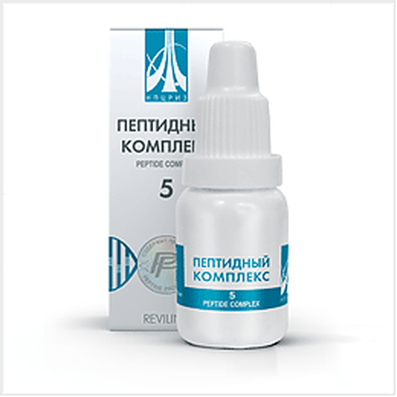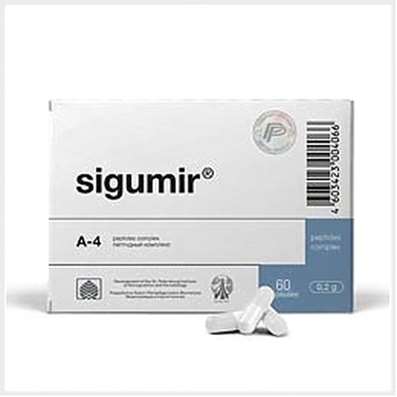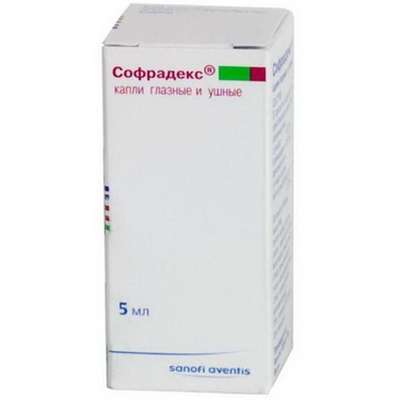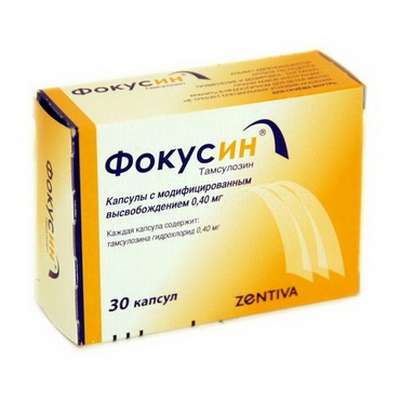Instruction for use: Xalacom
I want this, give me price
Dosage Form: eye drops
Active substance: Latanoprost + Timolol*
ATX
S01ED51 Timolol in combination with other drugs
Pharmacotherapeutic groups:
Beta-blockers in combinations
Prostaglandins, thromboxanes, leukotrienes and their antagonists in combinations
Ophthalmic agents in combination
The nosological classification (ICD-10)
H40 Glaucoma: glaucoma intervention; Afakicheskaya glaucoma; narrow-angle glaucoma; Chronic glaucoma; Chronic open-angle glaucoma; Wide-angle glaucoma
H40.0 Glaucoma suspected: Severe elevation of intraocular pressure; Hypertension of the eye; Eye hypertension; Measurement of intraocular pressure; Ophthalmic Hypertension; Increased IOP; Increased intraocular pressure; Increased intraocular pressure in infectious diseases of the eyes; Increased intraocular pressure; Increased ophthalmotonus; Spontaneous blockade of the angle of the opposite eye; Narrow chamber angle; Iatrogenic blockade of the angle of the opposite eye
H40.1 Primary open angle glaucoma: Open-angle glaucoma; Open angle glaucoma; Primary glaucoma; Pseudoexfoliation glaucoma; Increased IOP
Composition and release form
Eye drops 1 ml
Latanoprost 50 μg
Timolol maleate 6.83 mg
(Equivalent to 5 mg timolol)
Auxiliary substances: benzalkonium chloride (in the form of 50% solution), sodium hydrophosphate anhydrous, sodium dihydrogen phosphate monohydrate, sodium chloride, water for injection *
* If necessary (to ensure pH), add a solution of hydrochloric acid 10% or a solution of sodium hydroxide 10% - q.s.
In the dropper PE 2.5 ml; In a pack of cardboard 1 fl.
Description of dosage form
Clear colorless solution.
Pharmacology
Mode of action - antiglaucoma.
Pharmacodynamics
The composition of the drug Xalacom® includes 2 active components - latanoprost and timolol maleate. The mechanism of reducing the increased intraocular pressure (IOP) in these components is different, which provides an additional decrease in IOP in comparison with the effect achieved with each of these components in the form of monotherapy.
Latanoprost, an analogue of PGF2α, is a selective agonist of the prostanoid FP receptor and reduces IOP by increasing the outflow of aqueous humor, mainly by the uveoscleral route, and also through the trabecular network. It has been established that latanoprost has no significant effect on the production of aqueous humor and the hemato-ophthalmic barrier. During the short-term treatment, latanoprost does not cause fluorescein leakage into the posterior segment of the eye during pseudophakia. When used in therapeutic doses, latanoprost does not have a significant pharmacological effect on SSS and respiratory system.
Tymolol-nonselective β1- and β2-adrenoblocker, which does not have significant internal sympathomimetic activity, does not have a direct depressive effect on the myocardium or local anesthetic (membrane-stabilizing) effect.
Blockade of beta-adrenergic receptors causes a decrease in cardiac output in healthy people and patients with heart disease. In patients with severe myocardial dysfunction, beta-adrenoblockers can inhibit the stimulating effect of the sympathetic nervous system necessary for adequate cardiac function.
The blockade of beta-adrenergic receptors in the bronchi and bronchioles leads to an increase in the resistance of the airways under the influence of the parasympathetic nervous system. Such an effect can be dangerous for asthma patients and other bronchospastic diseases (see the sections "Contraindications" and "Special instructions").
The use of timolol maleate in the form of eye drops causes a decrease in elevated and normal IOP, regardless of the presence or absence of glaucoma. Increased IOP is the main risk factor for glaucomatous prolapse of visual fields. The higher the IOP, the higher the probability of glaucomatous prolapse of visual fields and damage to the optic nerve.
The exact mechanism of IOP decrease under the action of timolol maleate is not established. The results of tonography and fluorophotometry indicate that the main mechanism of action can be associated with a decrease in the formation of watery moisture. However, some studies have also noted a slight increase in outflow.
The combination of latanoprost and timolol maleate begins within an hour, and the maximum effect is observed for 6-8 hours.
With repeated use, an adequate decrease in IOP persists for 24 hours after administration.
Pharmacokinetics
The pharmacokinetic interaction between latanoprost and timolol maleate was not established, although 1-4 h after the combined preparation the concentration of latanoprost acid in aqueous humor was approximately 2 times higher than in monotherapy.
Latanoprost
Suction. Latanoprost, being a prodrug form, is absorbed through the cornea, where its hydrolysis occurs to a biologically active acid. It was found that the concentration in watery moisture reaches a maximum about 2 hours after topical application.
Distribution. Vd is (0.16 ± 0.02) l / kg. Latanoprost acid is determined in aqueous humor during the first 4 hours, and in plasma only within the first hour after topical application.
Metabolism. Latanoprost undergoes hydrolysis in the cornea under the action of esterases to form a biologically active acid. Latanoprost acid, entering the systemic bloodstream, is metabolized, mainly in the liver, by beta-oxidation of fatty acids to form 1,2-dinor- and 1,2,3,4-tetranor metabolites.
Excretion. Latanoprost acid is rapidly removed from the plasma (T1 / 2 = 17 min). The system clearance is approximately 7 ml / min / kg. Metabolites are excreted, mainly by the kidneys: after topical application with urine, approximately 88% of the dose administered is excreted.
Timolola maleate. The concentration of timolol maleate in watery moisture reaches a maximum about 1 hour after the application of eye drops. Part of the dose is systemically absorbed, and Cmax in the plasma, which is 1 ng / ml, is achieved 10-20 minutes after the drug is administered one drop in each eye once a day (300 μg / day). T1 / 2 timolol maleate from the plasma is about 6 hours. Timolol maleate is actively metabolized in the liver. Metabolites, as well as a certain amount of unchanged timolol maleate are excreted in the urine.
Indications of the drug Xalacom
The reduction of elevated intraocular pressure in patients with open-angle glaucoma or elevated intraocular the lack of effectiveness of other drugs for topical IOP lowering.
Contraindications
Hypersensitivity to latanoprost, timolol maleate or other components of the drug;
COPD severe course;
Sinus bradycardia;
AV-blockade II-III degree;
Clinically significant heart failure, cardiogenic shock;
Jet respiratory diseases, incl. Bronchial asthma (or indication of its presence in the anamnesis).
Carefully:
Inflammatory, neovascular, occlusive or congenital glaucoma;
Open-angle glaucoma in combination with pseudophakia;
Pigmentary glaucoma (due to lack of sufficient experience in the use of the drug);
aphakia, psevdoafakiya with posterior lens capsule rupture, patients with known risk factors for macular edema (in treatment of latanoprost described cases of macular edema, including cystoid).
Application in pregnancy and breastfeeding
Adequate controlled studies in pregnant women have not been conducted. The drug should be prescribed during pregnancy only in cases where the potential benefit exceeds the possible risk to the fetus.
Latanoprost and its metabolites can be excreted into breast milk. Timolol maleate, when applied in the form of eye drops, was also found in breast milk. Given the risk of serious adverse reactions in infants are breastfed and the importance of the drug to the mother should either stop breast-feeding or stop the drug.
Safety and efficacy in children are not established.
Side effects
When Xalacom® is used, the following undesirable reactions with a frequency of ≥ 1% are recorded.
On the part of the organ of vision: visual disturbances, blepharitis, cataracts, conjunctivitis, lesions of the conjunctiva (follicles, papillary reaction conjunctiva, petechiae et al.), Corneal lesions (erosion, pigmentation, punctate keratitis, etc.), Refractive disorders hyperemia eyes, Irritation of the eye, pain in the eyes, increased pigmentation of the iris, keratitis, photophobia, loss of visual fields.
Infections: sinusitis, upper respiratory infections and other infections.
Disorders of metabolism and nutrition: diabetes, hypercholesterolemia.
Mental disorders: depression.
From the side of the nervous system: headache.
Vascular disorders: hypertension.
For the skin and subcutaneous tissue disorders: hypertrichosis, rash, and skin changes (irritation dermatohalazion et al.).
From the side of the musculoskeletal system and connective tissue: arthritis.
Other undesirable effects that have been observed with monotherapy with individual components of Xalacom® (other than those mentioned above) are listed below.
Latanoprost
From the side of the organ of vision: irritation of the eyes (burning sensation, sensation of sand in the eyes, itching, tingling and sensation of foreign body); Transient point erosions of the epithelium, edema of the eyelids, edema and erosion of the cornea; Lengthening, thickening, increased number and increased pigmentation of eyelashes and hair follicles; Iritis / uveitis; Macular edema, incl. cystoid; Changing the direction of growth of eyelashes, sometimes causing eye irritation; Blurred vision.
From the skin and subcutaneous tissues: skin rash, darkening of the eyelid skin and local skin reactions on the eyelids.
From the nervous system: dizziness.
On the part of the respiratory system: asthma (including acute attacks or exacerbation of the disease in patients with bronchial asthma in the anamnesis), shortness of breath.
From the musculoskeletal system and connective tissue: pain in the muscles / joints.
General and local reactions: nonspecific pain in the chest.
Timolola maleate (in the form of eye drops)
From the side of the immune system: systemic allergic reactions, incl. Anaphylaxis, angioedema, urticaria, localized and generalized rash.
Metabolic and nutritional disorders: anorexia, hidden symptoms of hypoglycemia in diabetic patients.
Mental disorders: behavioral changes and mental disorders, incl. Confusion, hallucinations, anxiety, disorientation, nervousness, memory loss, decreased libido, insomnia and nightmares.
From the nervous system: cerebral ischemia, acute impairment of cerebral circulation, dizziness, increased symptoms of myasthenia gravis, paresthesia, drowsiness, fainting.
From the side of the organ of vision: cystoid macular edema, decreased sensitivity of the cornea; Abruption of the choroid after filtration surgical interventions; Ptosis, visual impairment, incl. Change refraction and diplopia.
From the side of the organ of hearing and the vestibular apparatus: noise in the ears.
From the heart: arrhythmia, bradycardia, cardiac arrest, heart failure, heart block, heartbeat, progression of angina pectoris.
Vascular disorders: intermittent claudication, coldness of hands and feet, hypotension, Raynaud's syndrome.
On the part of the respiratory organs: bronchospasm (mainly in patients with previous bronchospastic diseases), cough, shortness of breath, nasal congestion, pulmonary edema and respiratory failure.
From the gastrointestinal tract: diarrhea, dry mouth, dyspepsia, nausea, retroperitoneal fibrosis.
From the skin and subcutaneous tissues: alopecia, pseudopemphigoid, psoriasis-like rash or exacerbation of psoriasis.
From the side of the musculoskeletal system and connective tissue: systemic lupus erythematosus.
On the part of the reproductive system and mammary glands: impotence, Peyronie's disease.
General and local: asthenia / fatigue, chest pain, swelling.
Interaction
The interaction of Xalacom® with other drugs has not been specifically studied.
When using Xalacom® with patients receiving beta-adrenoblocker inside, a more pronounced decrease in IOP or an increase in systemic manifestations of beta-blockers is possible, therefore simultaneous topical application of two or more beta-blockers is not recommended.
With the simultaneous instillation of two analogues of PG in the eyes, a paradoxical increase in IOP is described, therefore, simultaneous use of two or more PG, their analogs or derivatives is not recommended.
With the simultaneous use of timolol maleate with adrenaline, mydriasis sometimes developed.
When tymolol maleate is combined with the drugs listed below, an additive effect with the development of systemic hypotension and / or severe bradycardia is possible:
- BPC;
- drugs that cause a decrease in the level of catecholamines, or beta-blockers;
Antiarrhythmics;
- cardiac glycosides.
Beta-blockers can increase the hypoglycemic effect of antidiabetics.
Dosing and Administration
Adults (including the elderly) - 1 drop in the affected eye (a) 1 time per day.
Overdose
Below is information on the symptoms of an overdose of two components of the drug.
Latanoprost
In addition to eye irritation and conjunctival hyperemia, other unwanted changes on the part of the eye in case of an overdose of latanoprost are unknown.
In case of accidental intake of latanoprost inside, the following information should be considered: 1 bottle with 2.5 ml of solution contains 125 μg of latanoprost. More than 90% of the drug is metabolized at the first pass through the liver. The IV infusion at a dose of 3 μg / kg in healthy volunteers did not cause any symptoms, however, when a dose of 5.5-10 μg / kg was administered, nausea, abdominal pain, dizziness, fatigue, hot flashes and sweating were observed. In patients with bronchial asthma of moderate severity, the administration of latanoprost in the eye at a dose 7 times higher than the therapeutic dose did not cause bronchospasm.
Timolola maleate
There are cases of unintentional overdose of eye drops of timolol maleate, which resulted in systemic effects similar to those in systemic use of beta-blockers: dizziness, headache, dyspnea, bradycardia, bronchospasm and cardiac arrest. (See section "Side effects").
In an in vitro study, it was shown that when dialysis, timolol is easily excreted from plasma or whole blood.
In patients with renal insufficiency, timolol dialysis was worse.
Treatment: in case of an overdose, symptomatic treatment is performed.
Special instructions
The drug Xalacom® should not be used more than once a day, as more frequent administration of latanoprost leads to a weakening of the IOP-lowering effect.
If you miss one dose, the next dose should be given at the usual time.
If the patient simultaneously uses other eye drops, they should be used at intervals of at least 5 minutes.
The composition of the drug Xalacom® includes benzalkonium chloride, which can be absorbed by contact lenses. Before dropping drops, contact lenses must be removed and reinstalled after 15 minutes.
Latanoprost. May cause a gradual increase in the content of brown pigment in the iris. The change in eye color is due to an increase in melanin content in the stromal melanocytes of the iris, rather than an increase in the number of melanocytes themselves. In typical cases, brown pigmentation appears around the pupil and concentrates on the periphery of the iris. In this case, the entire iris or parts of it become brown. In most cases, discoloration is negligible and may not be clinically established. The enhancement of the pigmentation of the iris of one or both eyes is observed, mainly, in patients with a mixed color of the iris, which is based on a brown color. The drug does not affect the nevi and lentigo iris; The accumulation of pigment in the trabecular network or in the anterior chamber of the eye is not noted.
In determining the degree of pigmentation of the iris for more than 5 years, no undesirable effects of pigmentation enhancement have been detected even with the continuation of latanoprost therapy. In patients, the degree of IOP reduction was the same regardless of the presence or absence of enhancement of the iris pigmentation. Therefore, treatment with latanoprost can continue in cases of increased pigmentation of the iris. Such patients should be under regular supervision, and, depending on the clinical situation, treatment may be discontinued.
Strengthening of the pigmentation of the iris is usually observed during the first year after the start of treatment, rarely - during the second or third year. After the fourth year of treatment, this effect was not observed. The rate of pigmentation progression decreases with time and stabilizes after 5 years. In more distant terms, the effects of increased iris pigmentation were not studied. After the cessation of treatment of the enhancement of brown pigmentation, the iris was not noted, however, the discoloration of the eyes may be irreversible.
In connection with the use of latanoprost, cases of darkening of the eyelid skin, which can be reversible, are described.
Latanoprost can cause gradual changes in eyelashes and fleece hair, such as lengthening, thickening, increased pigmentation, increased density and a change in the direction of eyelash growth. The eyelash changes are reversible and pass after the cessation of treatment.
Patients who apply drops to only one eye may develop heterochromia.
Timolola maleate
With topical application of beta-blockers, the same undesirable reactions can be observed, as in their systemic application. Patients with severe heart disease should be monitored continuously in order to detect symptoms of heart failure in a timely manner. When topical application of timolol maleate, the following reactions from the heart and respiratory system may occur: progression of Prinzmetal angina, as well as peripheral and central circulatory disorders, hypotension, heart failure with lethal outcome, severe reactions from the respiratory system, incl. Bronchospasm with fatal outcome in patients with asthma, bradycardia.
Before the extensive surgical intervention should discuss the advisability of a gradual abolition of beta-blockers. Preparations of this group violate the ability of the heart to respond to reflex beta-adrenergic stimulation, which can increase the risk with general anesthesia. There are cases of prolonged severe hypotension during anesthesia and difficulties in restoring and maintaining heartbeats. During the operation, the effects of beta-blockers can be eliminated with sufficient doses of adrenoreceptor agonists.
Beta-adrenoblockers can increase the hypoglycemic effect of antidiabetic agents and mask the symptoms and manifestations of hypoglycemia. They should be used with caution in patients with spontaneous hypoglycemia or diabetes mellitus (especially the labile course) receiving insulin or oral hypoglycemic agents.
Therapy with beta-blockers can mask some of the main symptoms and manifestations of hyperthyroidism. A sharp cessation of treatment can cause an exacerbation of this disease.
In the treatment of beta-adrenoblockers in patients with atopy or severe anaphylactic reactions to various allergens in an anamnesis, an enhancement of the response can occur upon repeated contact with these allergens. In this case adrenaline in usual doses, used to arrest anaphylactic reactions, may prove ineffective.
In rare cases, timolol maleate caused an increase in muscle weakness in patients with myasthenia gravis or myasthenic symptoms (eg, diplopia, ptosis, generalized weakness).
When using agents that reduce IOP, a detachment of the choroid after filtration procedures is described.
Effect on the ability to drive and other mechanisms. The use of eye drops can cause a transient blurred vision. While this effect does not disappear, patients should not drive a car or use sophisticated technology.
Terms of leave from pharmacies
On prescription.
Storage conditions of Xalacom
In the dark place at a temperature of 2-8 ° C. Open vial - at t no higher than 25 ° C, use within 4 weeks.
Keep out of the reach of children.
Shelf life of Xalacom
2 years.
Do not use beyond the expiration date printed on the package.

 Cart
Cart





